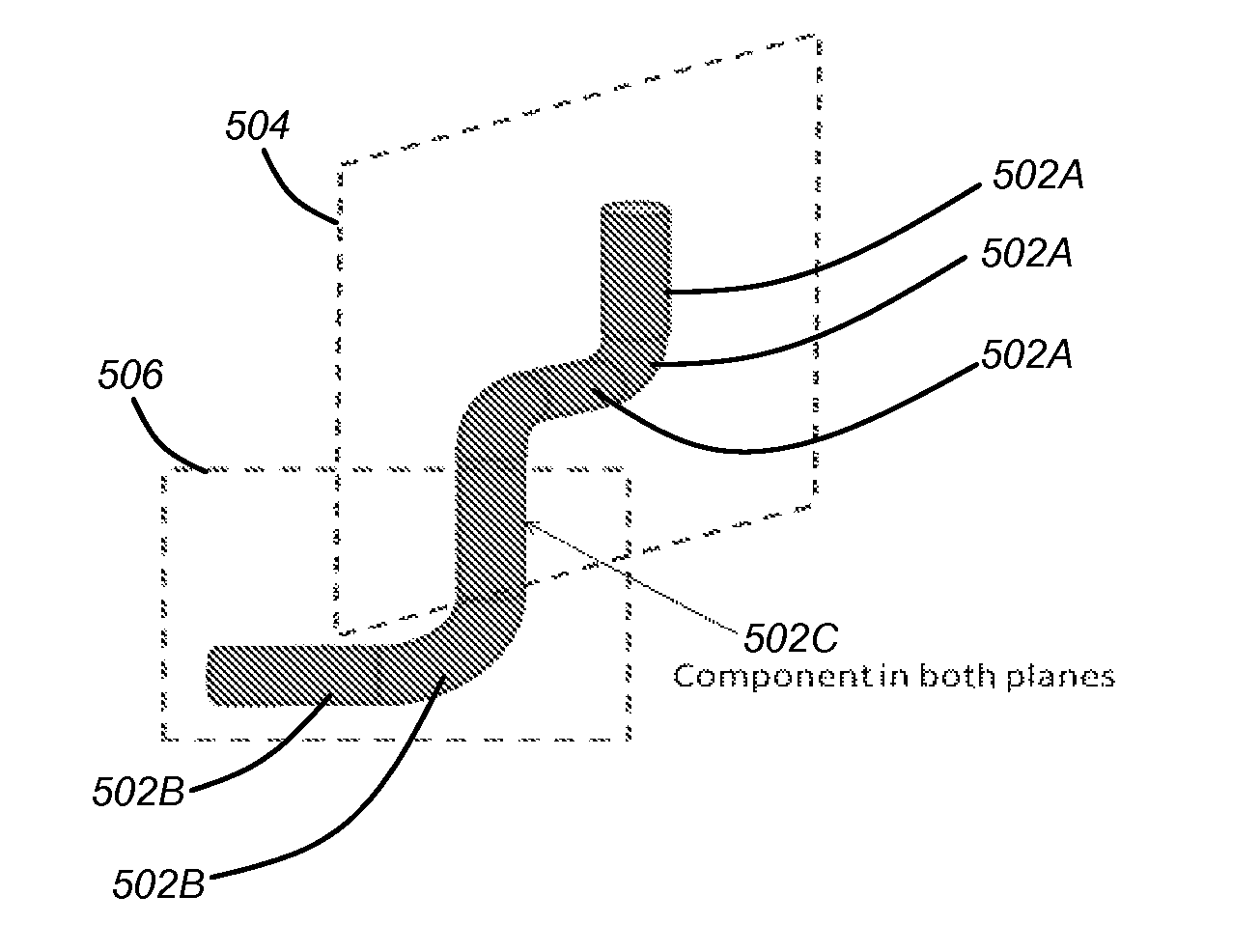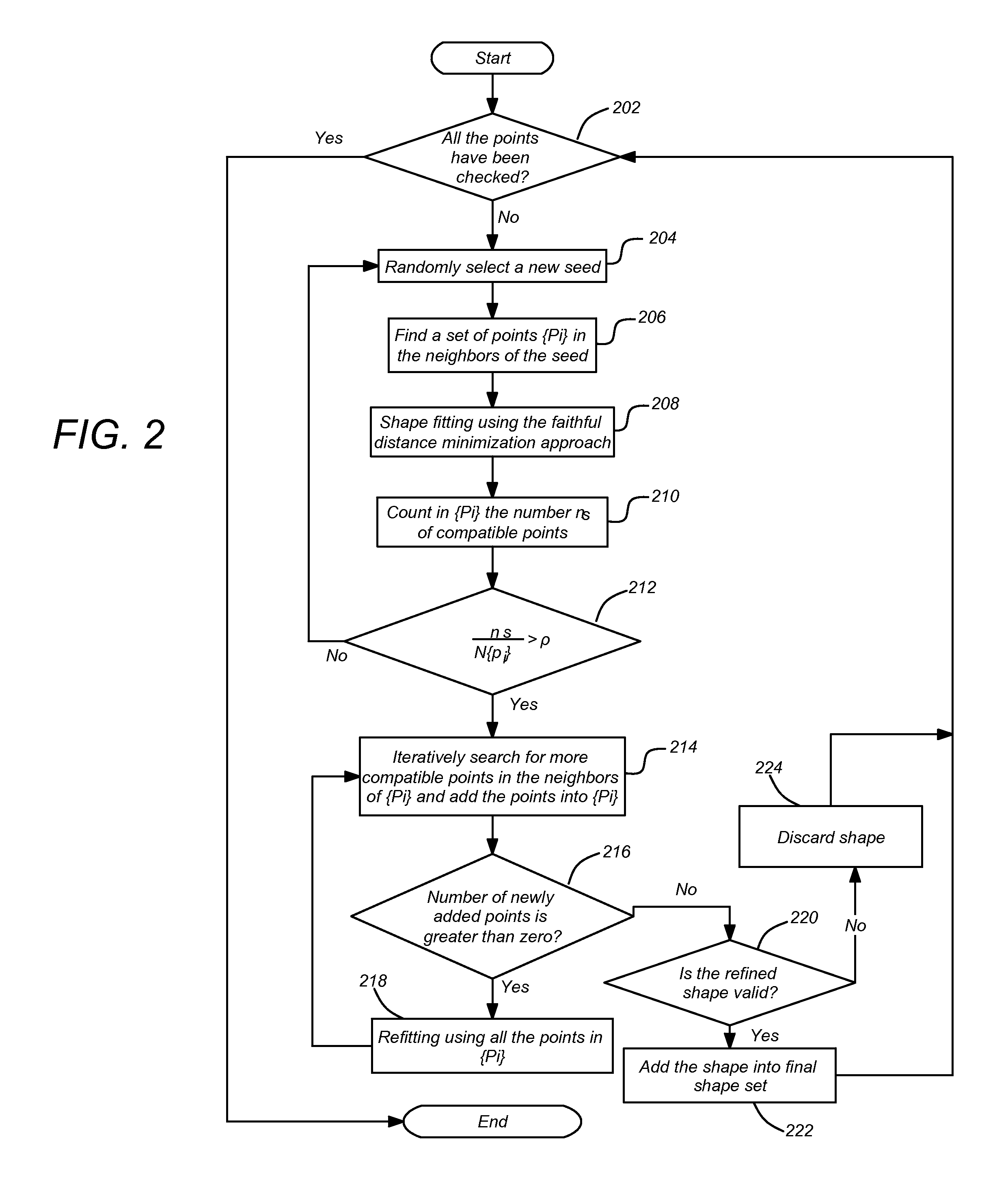Pipe reconstruction from unorganized point cloud data
a point cloud data and pipeline technology, applied in the field of pipeline reconstruction, can solve the problems of not cost-effective and practical to update these models, the situation is even worse for old sites, and the gap between the documented model and the as-built situation is large, so as to achieve efficient performance of the pipeline extraction process
- Summary
- Abstract
- Description
- Claims
- Application Information
AI Technical Summary
Benefits of technology
Problems solved by technology
Method used
Image
Examples
Embodiment Construction
[0040]In the following description, reference is made to the accompanying drawings which form a part hereof, and which is shown, by way of illustration, several embodiments of the present invention. It is understood that other embodiments may be utilized and structural changes may be made without departing from the scope of the present invention.
Overview
[0041]An automatic shape detection algorithm is used in pipeline reconstruction application to model the primitive shapes in a point cloud. This algorithm is based on basic primitive shape fitting. The automatic detection process is of a random sampling that is then propagated. The models obtained by primitive modeling are usually not completed because there may be some parts not modeled. Accordingly, to make the pipeline complete, approaches to correct, deduce and model the missed objects are brought out to complete the pipeline modeling.
Hardware Environment
[0042]FIG. 1 is an exemplary hardware and software environment 100 used to i...
PUM
 Login to View More
Login to View More Abstract
Description
Claims
Application Information
 Login to View More
Login to View More - R&D
- Intellectual Property
- Life Sciences
- Materials
- Tech Scout
- Unparalleled Data Quality
- Higher Quality Content
- 60% Fewer Hallucinations
Browse by: Latest US Patents, China's latest patents, Technical Efficacy Thesaurus, Application Domain, Technology Topic, Popular Technical Reports.
© 2025 PatSnap. All rights reserved.Legal|Privacy policy|Modern Slavery Act Transparency Statement|Sitemap|About US| Contact US: help@patsnap.com



